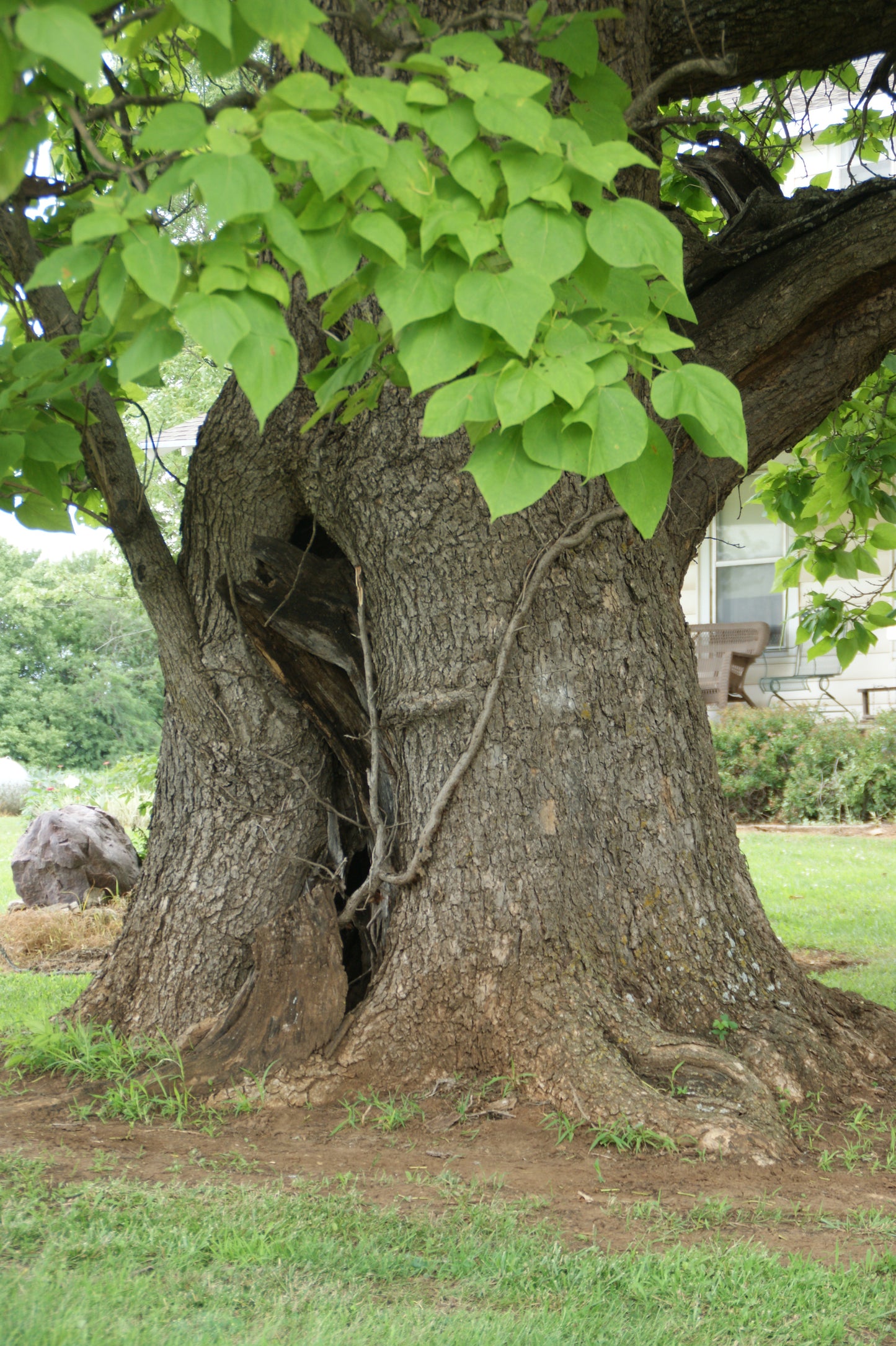Bareroot Plant Material
Northern Catalpa
Northern Catalpa
Couldn't load pickup availability
25 plants per unit
Catalpa speciosa, or Northern Catalpa is native to the Midwestern U.S. and has naturalized beyond its original range of the Mississippi river valley. It has been planted extensively throughout the Midwest primarily in shelterbelts and on old mining sites.
Leaves, Stems and Fruit
The leaves of Northern Catalpa are distinctively large (up to 12 inches long), and heart-shaped, with entire margins and long petioles (up to 6"). The whorled leaf arrangement is unique and makes identification easy. Twigs have large, suction cup-like leaf-scars which are whorled around the stem with prominent white lenticels. It is usually one of the last trees to leaf out in the spring, and one of the first to drop it's leaves in the fall. In May-June, it often exhibits a vibrant display with its large clusters of tubular-shaped white flowers with purple and yellow spots. Mature bark is usually brown, scaly or blocky with large ridges that often twist with the trunk of the tree. The fruit is a long bean-like pod which can grow several feet long, often persisting through the winter on the tree. The pods house large quantities of papery thin seeds.
Use
Windbreak- Due to its fast growth rate and drought tolerance, Northern Catalpa can be grown throughout the state and makes a decent candidate for windbreaks, although it has been observed to be sensitive to herbicide drift, limiting its utility bordering crop fields.
Wood- Though not common as a commercial timber species, Northern Catalpa was versatile for early settlers in the Plains States as it can be used for lumber products, fuel-wood, and has a decay resistant heartwood making it suitable for fence-posts.
Adaptation and Soil
Although it is described as a moisture loving species, it is also moderately drought tolerant and can handle a variety of soil conditions. It is a relatively long-lived tree, usually attaining mature heights of around 60 feet in ideal conditions. It is considered shade intolerant and has a rapid growth rate, particularly during its early life-stage.
Spacing
Space Catalpa 8 to 18 feet within rows and 12 to 18 feet between rows.
Culture
One-year-old containerized seedlings (30-40" tall) are sold for conservation plantings. During the establishment period, supplemental watering and control of competing vegetation will aid survival and early growth.
Pests
Rodent damage can occur on young trees, and protective measures may be required to get this plant established. Some insects can defoliate the trees including the specialized catalpa sphinx moth (Ceratomia catalpa), although damage is usually not serious enough to cause die-back. Interestingly, these caterpillars are reportedly prized as fish bait.





